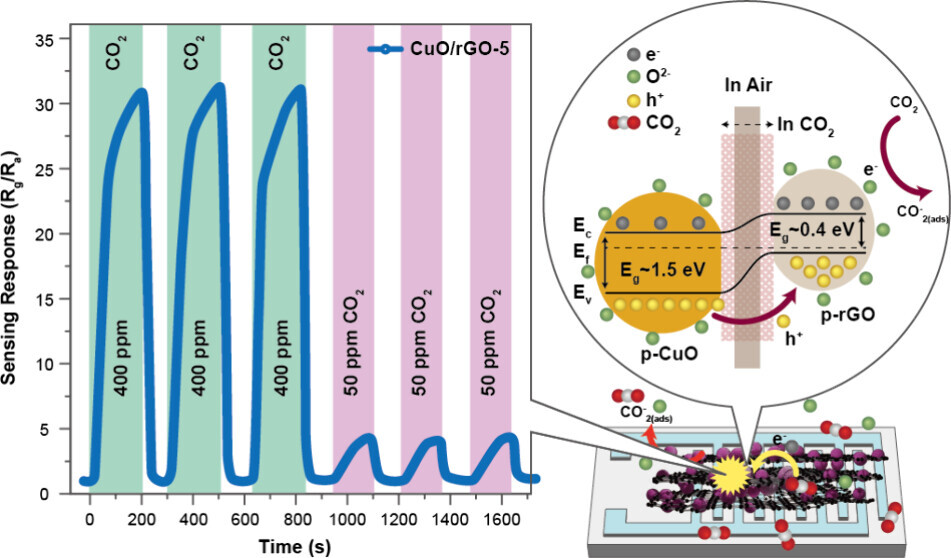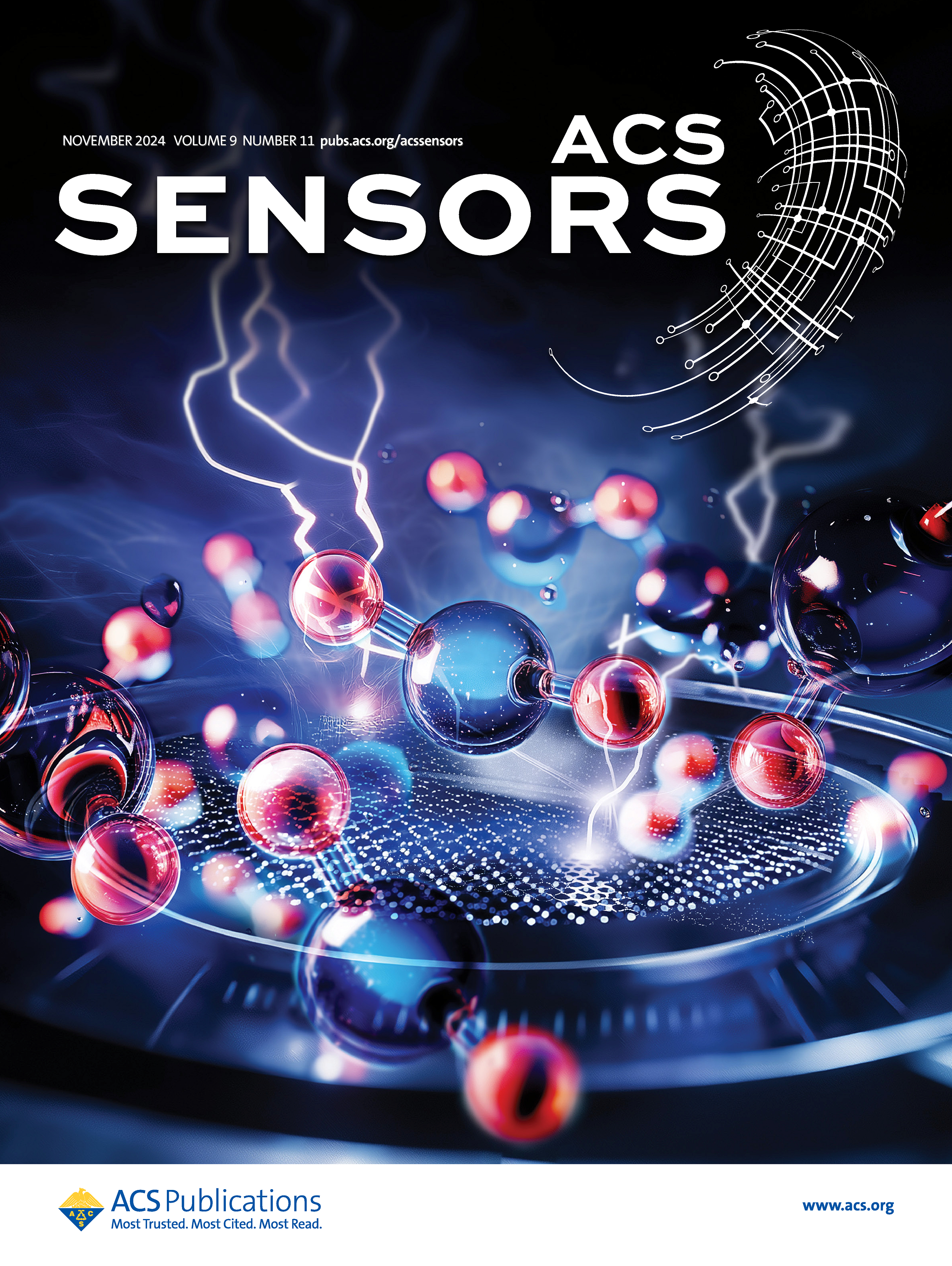Exploring MOF-Derived CuO/rGO Heterostructures for Highly Efficient Room Temperature CO2 Sensors
A CuO/rGO-based CO2 sensor was developed for room-temperature detection with high sensitivity. It achieves a detection limit of 2 ppm and stable performance over 30 days. The p–p heterojunction structure enhances gas adsorption and selectivity. This technology benefits indoor air quality monitoring and climate-related applications. It offers a promising tool for sustainable and smart environmental solutions.

Technology Overview
This study presents a novel room-temperature CO2 gas sensor based on p–p-type CuO/rGO heterostructures, synthesized via a solvothermal method using an MOF template. The design leverages the synergistic interface effects of p–p heterojunctions to improve sensitivity and selectivity. The optimal sensor, with 5 wt% rGO, exhibited a high response of 39.6 to 500 ppm CO2 and a low detection limit of 2 ppm, maintaining 98% performance stability over 30 days. Structural analysis confirmed the strong interaction between CuO nanoparticles and graphene, while DFT calculations supported the enhanced adsorption mechanism. This combination of experimental and theoretical insights advances the development of high-performance, low-energy gas sensors.
Applications & Benefits
This CO2 sensor offers a cost-effective, stable, and energy-efficient solution for climate change mitigation and environmental monitoring. Its high sensitivity at room temperature makes it ideal for continuous indoor air quality tracking and precision agriculture, contributing to public health and sustainability. The sensor’s robust performance under humidity conditions further enhances its real-world applicability. Insights from this research can guide the design of future selective gas sensors for other critical pollutants. Overall, the technology supports scalable deployment in smart cities and green infrastructure initiatives.
Abstract:
In response to the urgent need for advanced climate change mitigation tools, this study introduces an innovative CO2 gas sensor based on p-p-type heterostructures designed for effective operation at room temperature. This sensor represents a significant step forward, utilizing the synergistic effects of p-p heterojunctions to enhance the effective interfacial area, thereby improving sensitivity. The incorporation of CuO nanoparticles and rGO sheets also optimizes gas transport channels, enhancing the sensor’s performance. Our CuO/rGO heterostructures, with 5 wt % rGO, have shown a notable maximum response of 39.6–500 ppm of CO2 at 25 °C, and a low detection limit of 2 ppm, indicating their potential as high-performance, room-temperature CO2 sensors. The prepared sensor demonstrates long-term stability, maintaining 98% of its initial performance over a 30-day period when tested at 1-day intervals. Additionally, the sensor remains stable under conditions of over 40% relative humidity. Furthermore, a first-principles study provides insights into the interaction mechanisms with CO2 molecules, enhancing our understanding of the sensor’s operation. This research contributes to the development of CO2 monitoring solutions, offering a practical and cost-effective approach to environmental monitoring in the context of global climate change efforts.

Exploring MOF-Derived CuO/rGO Heterostructures for Highly Efficient Room Temperature CO2 Sensors
Author:Toton Haldar, Jia-Wei Shiu, Ren-Xuan Yang, Wei-Qi Wang, Hsin-Ting Wu, Hsu-I Mao, Chin-Wen Chen, Chi-Hua Yu
Year:2024
Source publication:ACS Sensors, Vol 9, Issue 11, September 18, 2024
Subfield Highest percentage:99% Fluid Flow and Transfer Processes #1 / 97